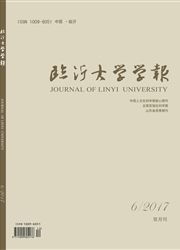

 中文摘要:
中文摘要:
明清是荀学研究的两个重要时期。《明史》《清史稿》是记载明清历史发展的大宗史料。《清史稿》出现荀子的次数比《明史》多14次,并且与荀子有关的内容在两史中的分布和关切也各不同。荀学对明清官方的影响处于边缘地位,明清时代对《荀子》的重视、荀子性恶论的评价、荀子传经的关注亦各不同。明清荀学经历了由抑荀到扬荀的发展演变,与两代的政治、学术变迁有着紧密的联系。考察两史成书的背景.清代实学发展与荀学复兴基本没有影响《明史》对待荀子的态度,但很大程度上影响了《清史稿》对荀子的态度。十九世纪未以来的西学传入对《清史稿》记载和评价荀子的影响有限。
 英文摘要:
英文摘要:
The Ming and Qing Dynasties are two important periods of Xunzi research. The "Ming" and "QingShiGao", as the bulk of the historical records in the Ming and Qing Dynasties, Xunzi appeared at "QingShiGao" 14 times more than that at "Ming", and the distribution and concerns of Xunzi in them are also different. The influence of Xunzi is at an edge of official Ming and Qing Dynasties. The focus on Xunzi, the evaluation of Xunzi' s Evil-Character theory and Xunzi' s transmission from one chamlel to another are also different. Xunzi Ideology experienced complex changes from criticism to worship during the Ming and Qing Dynasties, which is closely related to political and academic changes 0fthe two dynasties. According to the background research of the two, the development of Shixue in Qing dynasty and Xunzi Renaissance basically have little influence on "Ming" in the treatment ofXunzi's attitude, but greatly affected the attitude of "QingShiGao". Since the end of the nineteenth Century the Western are introduced, which influence the evaluation of Xunzi on "QingShiGao".
 同期刊论文项目
同期刊论文项目
 同项目期刊论文
同项目期刊论文
 期刊信息
期刊信息
